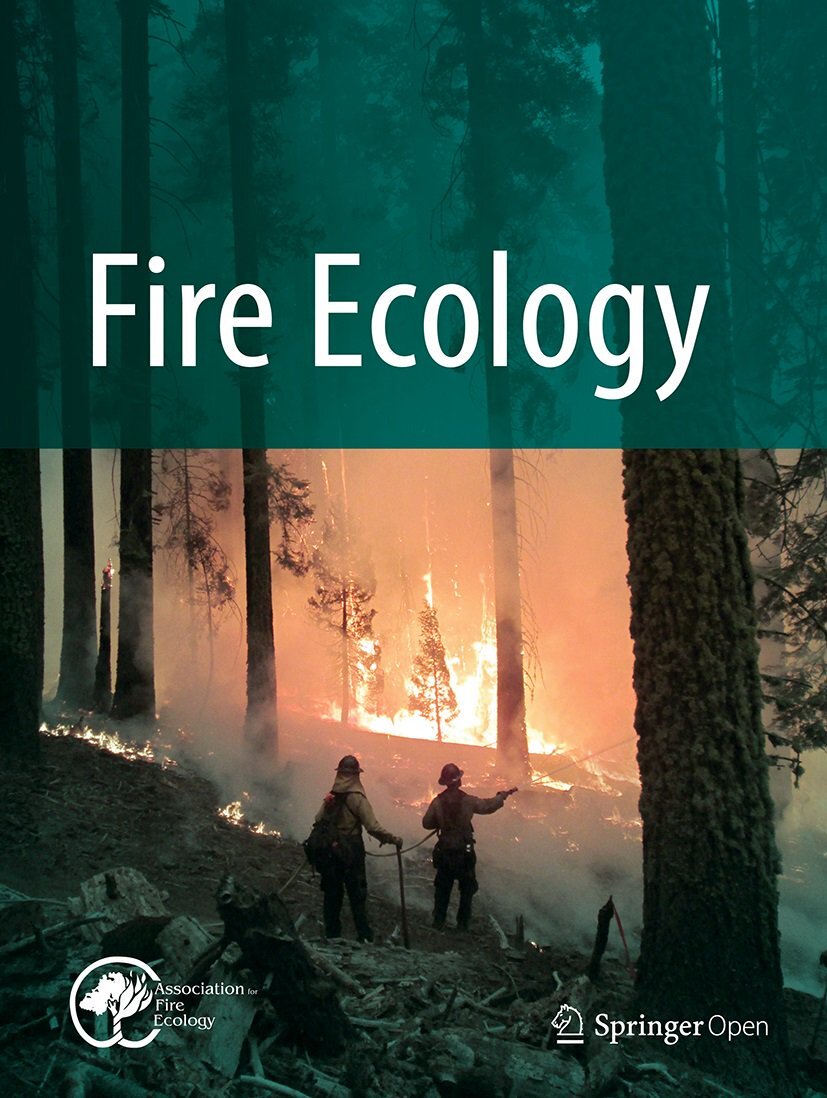AFE is pleased to award three students with the Wayne Harrison Memorial Scholarship in 2021.
The Wayne Harrison Memorial Scholarship supports academic and professional growth of students through funding research, management, or education projects related to wildland fire science. AFE received 13 strong applications for the scholarship’s inaugural year, and a panel of four judges independently reviewed, scored the applications, and selected three awardees.
Seeking the burning question: a trait-based plant response to fire in a tropical Savanna
Heloiza Lourenço Zirondi, PhD Student
São Paulo State University, Institute of Biosciences, Biodiversity Department
Awarded $2500
Plant traits influences plant performance and responses to biotic and abiotic factors and thus, the knowledge about plant traits can help to elucidate ecological processes and response to disturbances such as fire. In fire-prone environments, not only fire but rather the fire regime will affect plant responses and plant traits. Therefore, altering any component of fire regime, such as fire frequency, could lead to changing plant response, diversity, and community dynamics. Hence, we aim to evaluate how fire affects plant traits, mainly seed and germination traits in a tropical Savanna. For that, we will focus on four main points: i) Evaluate the Intra and interspecific variation of seed and germination traits according to a fire frequency gradient, ii) Evaluate how does fire frequency affect the trade-off of resprouter (clonal vs. non-clonal) plants allocating resources towards vegetative and reproductive structures, iii) Evaluate how the seed longevity and germination response to fire cues (heat shock and smoke) of native seeds are affected when seeds are stored in situ and iv) Explore the relationship of seed tolerance to high temperatures and seed traits for Cerrado species. We expect that this research could provide insightful information on reproductive traits and plants' response to fire and changes in fire regime. Thus, aiding in management plans, restoration information subsidies, and diversity conservation in Cerrado and tropical Savannas.
Sunlight effects on sorption dynamics of dissolved black carbon at the mineral: water interface
Burke Leonce, PhD Student
Geosciences Department, Baylor University
Awarded $1320
The proposed project builds on my ongoing investigation of the critical relationships that govern the biogeochemical cycling of carbon between continents, atmosphere and the ocean. I use established techniques such as 13C nuclear magnetic resonance spectroscopy, fluorescence spectroscopy, and unconventional techniques such as flow adsorption microcalorimetry to study structure-reactivity relationships that control abiotic and biotic interactions of organic carbon in soils and aquatic systems. Of central importance is understanding how climate- and anthropogenic-induced alterations in wildfire regimes will affect carbon stocks and associated ecosystem functions such as nutrient cycling, contaminant transport and climate regulation. My current research thrust is aimed at better understanding the roles of sunlight, minerals and microbes in the transformation of fire-derived organic carbon to develop a more comprehensive picture of carbon cycling in fire-impacted watersheds.
The Effects of Prescribed Burning on Butterfly Populations in South Texas
Rebecca Zerlin, Master’s student
Texas A&M University-Kingsville, Department of Range and Wildlife
Awarded $2500
The objective of this study is to determine effects of different prescribed burn intervals and seasons on butterfly populations. Because individual species respond differently to burning, there is not one single fire management strategy that will be beneficial for every butterfly species, so our goal is to find one that benefits multiple pollinators. Hansmire et al. [7] saw that winter burns promoted forb growth in Texas, which could be beneficial for butterflies. Time-interval studies have shown that insects respond well to burns when they have ample amount of time in between burns to recolonize and allow populations to rebound [8, 9, 10, 11]. With this knowledge, we believe that butterflies will have the most diversity and abundance in long-term winter burn interval treatments. Our site is a private ranch in Willacy and Kenedy Counties, Texas. Sixteen plots ranging from 500 to 1200 acres are burned with different season and return intervals: summer and winter long return intervals, summer and winter short intervals, and no burn control plots. Beginning March 2020, monthly butterfly and vegetation surveys have been conducted. Inferential statistics will be used to analyze data. Comparisons will be made to determine significant differences in species richness and diversity 1) between burned units and controls, 2) between seasonal intervals, and 3) between timing intervals. Our results will help land managers determine the proper burn season and return interval for maximizing butterfly populations.


